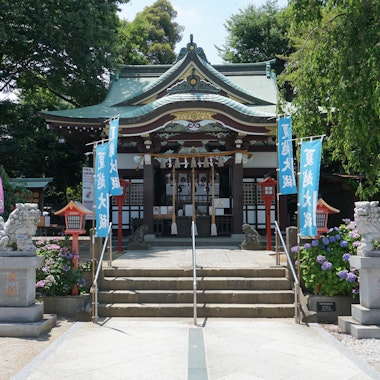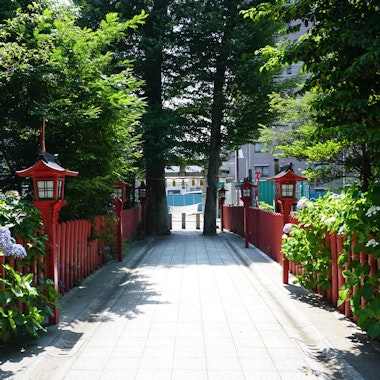


Kawagoe Hachiman Shrine stands as the first Hachiman shrine established in Kawagoe, earning it the designation of ichinomiya, the supreme shrine in the province. Founded in 1030 by Minamoto no Yorinobu, the Governor of Kai, the shrine was built following a military victory. During the Revolt of Taira no Tadatsune in 1028, Yorinobu prayed for victory at this site before successfully quelling the rebellion. In gratitude for his success, he constructed the shrine, establishing its reputation as a place for prayers related to competition and success.
The shrine's cultural significance centers on several distinctive features. The main deity worshipped is Emperor Ojin, the 15th Emperor of Japan, also revered as the God of War, Hachiman. The shrine is particularly known for its legendary Nuptial Tie Ginkgo tree, a natural marvel within the grounds. Originally two separate ginkgo trees, male and female, were planted in 1933 to celebrate the birth of Emperor Heisei. Over decades, these trees grew together, becoming a symbol of romantic connection and making the shrine popular for matchmaking blessings. The shrine also gained significance through its connection to Ota Dokan, the builder of Kawagoe Castle and Edo Castle, who was enshrined here as a guardian after his death.
Visitors can explore multiple spiritual sites within the shrine complex. The Minbu Inari Shrine, located within the grounds, attracts athletes and sports enthusiasts seeking blessings for leg and lower back health. The shrine is believed to grant success in exams and sports, attracting many students and athletes for prayers. Throughout the year, the shrine hosts traditional events including children's sumo tournaments in June, hydrangea festivals, and the Chinowa Kuguri summer purification ritual. The shrine offers various goshuin shrine stamps, including special editions commemorating its 1000-year anniversary.
The shrine is located approximately 6 minutes on foot from JR Kawagoe Station and Tobu Tojo Line Kawagoe Station. Admission to the shrine grounds is free, and parking accommodates 30 vehicles without charge. The shrine maintains a quieter atmosphere compared to other Kawagoe attractions, as it sits closer to the shopping district than the main tourist zone, offering visitors a more local temple experience away from the crowds.